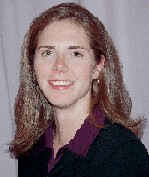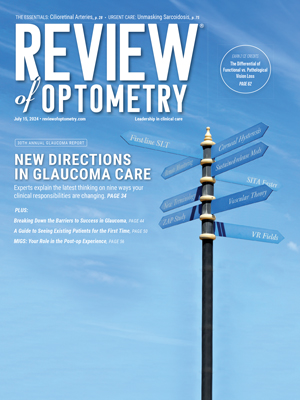Consider: CNNs Soledad OBrien makes 40 New Years resolutions every year. I no longer wonder how she became so successful.

Despite her grueling schedule and growing family, it is the perception of this media icon that she is free to make 40 changes every 12 months. She simply believes she can and, therefore, does. I am convinced that it is precisely this recognition of freedom that makes success possible, both on a personal and a professional level.
Yet, so few of us make the changes we long for, myself included. Instead, we focus on limitations, such as scope of practice limits, a hurting economy or a litany of self-defined roles and responsibilities. We respond to colleagues successes with a must-be-nice attitude and have fatalistic illusions of our own crosses to bear. This, of course, restricts our capacity to revel in our successes or change our lives for the better.
It doesnt have to be that way. Take advantage of New Year fever. Before you worry about filing your taxes, take a moment to reflect on where you are in life, how far youve come, where you want to go and how youre going to get there. Take time to delight in your freedom, your good fortune and the long list of options available to you. That is the focus of this months issue of Review of Optometry.
The cover story, 10 Best Places to Practice Optometry, may inspire some to catch the next Greyhound, but more likely it will make you appreciate the benefits available in your own backyard. (In fact, more than 60% of your colleagues think they live in the best town to practice optometry.) For each contending location, senior editor John Murphy looked at nine ratings, ranging from income to climate, in order to compile the 10 Best List. You might be surprised by some of the winners.
Similarly, optometrist Tom Barreto of Portland, Ore., started his practice cold on a shoestring budget in 1991. Youll hear his story in Transforming an O.D.s Practice. After bringing in a full-time associate in 2001, Dr. Barreto needed more than one exam lane and just 1,500 square feet. He was so committed to transforming his relatively new practice that he and his staff moved into a temporary space while crews remodeled his practice. For four months he had to endure portable walls, no air conditioning and no bathroom. If thats not commitment to improvement, I dont know what is.
Reviews own Robert Cole, O.D., chief clinical editor, also shares an inspiring story of change in How We Went Paperless (Almost),. Dr. Cole describes the challenges he faced during the three years hes spent moving toward a paperless practice. I cant say the entire transition was easy or inexpensive. Quite the contrary; at one point I considered it a nightmare. But, he says, the efficiency hes achieved was well worth the effort.
This months clinical features also highlight the freedom you enjoy as optometrists. As you know, there has been much debate regarding when its appropriate to turn to new fourth-generation fluoroquinolones. If you know a third-generation or other agent will be sufficient, should you stick with the tried and true? Should you save the so-called big guns for when youre certain of the diagnosis? The beauty of these questions is that you get to make the final call. No one is standing over your shoulder dictating what you must prescribe although authors Arthur B. Epstein, O.D., and William Townsend, O.D., might like to do just that. Each makes a convincing case for when to use certain agents in Have Fourth-Generation Fluoroquinolones Abolished the Firepower Debate? .
Finally, if youre looking to branch out, check out Eye Detector: An Introduction to Drug Detection Skills. Drs. Bertolli, Forkiotis, Pannone and Dawkins explain what you can do to assist law enforcement and prosecutor education programs, perform school screenings and educate school nurses and other officials.
Now that the new year is in full swing, identify what you want and go after it. In most cases, youll find that the only thing holding you back is you.

